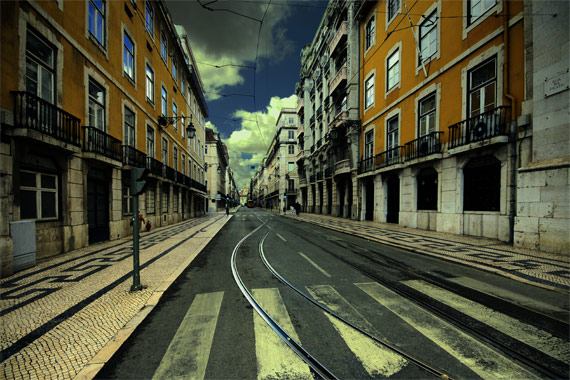Define the following, put in your journal:
- Aperture/F-stop-The aperture stop of a photographic lens can be adjusted in order to control the amount of light reaching the film. In combination with variation of shutter speed, the aperture size will regulate the film’s or image sensor’s degree of exposure to light. Usually, a fast shutter speed requires a larger aperture to allow sufficient light exposure, and a slow shutter speed requires a smaller aperture to avoid too much exposure.
 Diagram of decreasing aperture sizes (increasing f-numbers) for “full stop” increments (factor of two aperture area per stop)
Diagram of decreasing aperture sizes (increasing f-numbers) for “full stop” increments (factor of two aperture area per stop) - Aperture Priority-setting on some cameras that allows the user to choose a specific shutter speed while the camera adjusts the aperture to ensure correct exposure. It is different from manual mode, which the user has to decide both values, aperture priority where the user picks an aperture with the camera selecting the shutter speed to match, or program mode where the camera has to select both.
- Ambient Light-Ambient light is the available light in a room, whether by natural or mechanical sources.
- Artificial Light-Artificial lighting is any lighting that is not sunlight.
Generally speaking, artificial lighting is lighting which is man made, such as fluorescent, tungsten, mercury vapor, sodium vapor, halogen, compact fluorescent, et cetera. It can be turned on and off at a flick of a switch.
There are also very special types of artificial light for specific purposes Such as infared heat lamps, ultraviolet lights for plant growth and tanning, et cetera.
In photography, different light sources have a different color temperature which can be compensated for with special filters or simulated with special lighting. A flash simulates the light of the sun for a fraction of a second. - ASA/ISO/Film Speed-Film speed is the measure of a photographic film's sensitivity to light, determined by sensitometry and measured on various numerical scales, the most recent being the ISO system.
A closely related ISO system is used to measure the sensitivity of digital imaging systems.
Relatively insensitive film, with a correspondingly lower speed index requires more exposure to light to produce the same image density as a more sensitive film, and is thus commonly termed a slow film. Highly sensitive films are correspondingly termed fast films.
In both digital and film photography, the reduction of exposure corresponding to use of higher sensitivities generally leads to reduced image quality (via coarser film grain or higher image noise of other types). In short, the higher the sensitivity, the grainier the image will be. - Bracket-the general technique of taking several shots of the same subject using different or the same camera settings. Bracketing is useful and often recommended in situations that make it difficult to obtain a satisfactory image with a single shot, especially when a small variation in exposure parameters has a comparatively large effect on the resulting image. Autobracketing is automatic bracketing by using a setting on the camera to take several bracketed shots (in contrast to the photographer altering the settings by hand between each shot). Given the time it takes to accomplish multiple shots, it is typically, but not always, used for static subjects.
- Depth of Field-Depth of field refers to the range of distance that appears acceptably sharp. It varies depending on camera type, aperture and focusing distance, although print size and viewing distance can also influence our perception of depth of field. This tutorial is designed to give a better intuitive and technical understanding for photography, and provides a depth of field calculator to show how it varies with your camera settings.
- Exposure Triangle- 1. written a post on ISO – the measure of a digital camera sensor’s sensitivity to light. 2. Aperture – the size of the opening in the lens when a picture is taken 3. Shutter Speed – the amount of time that the shutter is open
- How to Control Depth of Field-The aperture ranges from f/1.4 (a super-fast lens) to f/22, with increments in between (f/2, f2.8, f/4, f/5.6, f/8, f/11 and f/16). Each f/number up or down represents one “stop” of light, such that when you move from f/4 to f/5.6 you’re letting ½ as much light, and if you move from f/16 to f/11 you letting in twice as much light. This number ratio is the same across all lenses, regardless of focal length… making it really easy to understand the concept across lenses. By understanding how the aperture works, you can utilize the hyperfocal distance for each lens for maximum effect. The hyperfocal distance is basically a point in which you focus and everything from that point to infinity will be sharp. When you want your landscapes to blow everyone’s mind, you have to master hyperfocal distance.
- Light Meter- a device used to measure the amount of light. In photography, a light meter is often used to determine the proper exposure for a photograph. Typically a light meter will include a computer, either digital or analog, which allows the photographer to determine which shutter speed and f-number should be selected for an optimum exposure, given a certain lighting situation and film speed.







